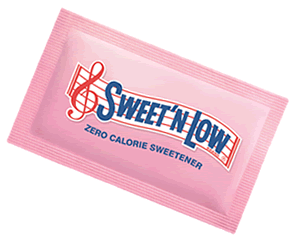

Information on Diabetes

Receiving a diagnosis of diabetes or pre-diabetes can be both overwhelming and frightening. Providing your patients and clients with information and a concrete action plan to better understand and manage their new condition is essential.
See below for some useful facts you can share with your patients.
Key Facts About Diabetes
Prevalence:
- 29.1 million Americans (9.3% of the population)
- 21 million people diagnosed
- 8.1 million people undiagnosed (27.8% of the population)
- Additional 86 million Americans considered pre-diabetic
Incidence:
- About 1.7 million new cases diagnosed annually (for adults 20 years and older)
- Leading cause of
- Kidney failure
- Nontraumatic lower-limb amputations
- New cases of blindness among adults in the United States
- Heart disease and stroke
Direct healthcare costs total $176 billion annually
90-95% of diagnosed diabetes are Type 2 Diabetes
CDC’s National Diabetes Fact Sheet 2014

Tips to Help Manage Diabetes
Keeping blood glucose in control (i.e., within a predetermined target range) is of primary importance when setting goals for patients and clients with diabetes. Establishing a meal plan to help guide food choices is a critical first step. Registered dietitians should work with individuals to help create meal plans that meet the following goals:
- Choose healthful, nutrient-dense foods
- Eat fatty fish at least 2 times per week
- Reduce total calories to achieve weight reduction in overweight/obese patients
- Monitor grams of carbohydrate consumption daily as well as carbohydrate sources
- Aim for meal-to-meal consistency in carbohydrate intake
- Avoid skipping meals
- Decrease saturated fat to less than 10% of total calories
- Aim to have 2300 mg of sodium (about 1 teaspoon salt) or less. (check with your health care provider if you have high blood pressure, he/she may recommend less)
- Limit alcohol intake
Because foods high in added sugars can rapidly increase blood glucose levels, reducing added sugars in the diet is important.
Utilizing a zero-calorie sweetener, such as Sweet'N Low®, in place of added sugars, is an easy way to sweeten foods and beverages without the calories and carbohydrates from added sugars. Sweet'N Low has 4 calories per serving, which is considered 'zero-calorie' by the FDA, and less than 1g of carbohydrate per serving. Each packet of Sweet'N Low is about as sweet as 2 tsp. of sugar.
Exercise is also key to managing blood sugar. Regular physical activity can improve insulin sensitivity, help with weight control and manage stress. Remind patients to check with their health care provider before beginning a new exercise program.
If lifestyle interventions fail to restore blood glucose to normal or near-normal levels, intervention with prescription medications should be considered by the health care team.

Additional Information for Health Professionals
- Facts About Diabetes
- Sweeteners Facts and Fallacies
- New Nutrition Therapy Recommendations for Adults with Diabetes
- Winning Ways in Diabetes Management — Experts Share Best Strategies for Counseling Newly Diagnosed Patients
- Sugar Substitutes — Useful Ingredients in Effective Diabetes Management
- The Truth About Artificial Sweeteners or Sugar Substitutes
- The Sweet Truth about Low Calorie Sweeteners and Diabetes
- A Snapshot of Diabetes in America
- Understanding Advanced Carbohydrate Counting

Patient Handouts
- Take Charge of Your Diabetes
(Centers for Disease Control and Prevention) - Diabetes Advisor: Practical Tips for Healthful Eating
(American Diabetes Association) - Diabetes Advisor: Sweets and Desserts for People With Diabetes
(American Diabetes Association) - Diabetes and Your Weight: What's the Connection?
(American Diabetes Association) - "Have Your Cake & Eat It Too! Tips to Lighten Up Your Family's Favorite Treats", developed with the American Dietetic Association.
(Also available in Spanish) - Sweet & Simple Food and Activity Log
- Taking Care of Type 2 Diabetes









